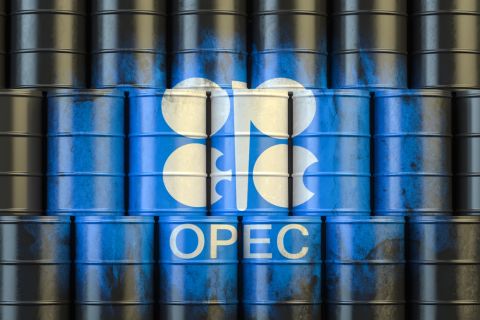We frequently discuss shoulder seasons—basically the early fall and spring periods between winter and summer when heating/cooling demand are at their lowest. In 2015, we’re in the midst of another form of shoulder season: one in the center of the market’s nominal peak demand season, but instead of park prices, we see lower prices from an oversaturated market.
The outlook for crude prices has been mixed with several analysts, perhaps most notably Goldman Sachs, forecasting that values could fall below $40 per barrel (bbl). However, other firms, such as Barclays Capital, En*Vantage and Global Hunter Securities, are predicting prices above this threshold.
According to En*Vantage, geopolitical risks in economically weak oil-producing nations could cause production declines or disruptions. Barclays Capital also anticipates crude prices will consolidate, as it retained a neutral outlook. Global Hunter Securities anticipates a near-term drop in values with West Texas Intermediate prices falling to the mid-$40s per bbl. While the outlook for crude remains uncertain, the outlook for ethane has a bright side for the first time in more than a year as margins turned positive after struggling for much of the past two years. Granted, these positive margins are quite slim and once transportation fees are calculated, they are no longer positive, but it is an upside for the market.
The ethane sector has experienced tremendous headwinds the last year-and-a-half as cracking capacity was reduced by expansions and turnarounds. This was especially troubling to producers as it increased storage and resulted in widespread rejection.
But this strategy was successful as ethane prices held firm while the rest of the NGL barrel took a downturn in value in late 2014 and early 2015. Since ethane makes up the bulk of the NGL barrel and is expected to begin to post gains later in the first quarter when cracking capacity peaks, it is a positive sign for NGL producers.
On the opposite end of the spectrum is propane, which has lost more than $1 per gallon (gal) in value in the past year at the Mont Belvieu, Texas, hub and nearly $2.50 per gal at the Conway, Kan., hub. Last year, propane had record demand from both the home heating and LPG export markets. This year, heating demand isn’t as high, even after the much vaunted “Blizzard of 2015” that failed to live up to expectations in many regions. LPG export demand has dropped significantly, leaving a large storage overhang.
It’s been a staggering decline, and prices will likely remain flat or possibly decrease further before they improve.
Frank Nieto can be reached at fnieto@hartenergy.com or 703-891-4807.

Recommended Reading
Paisie: Favorable Fundamentals Will Lift 4Q Crude Prices
2024-11-20 - China, OPEC+ and the Middle East continue to feed volatility into the oil market.
Oil Rises 1% as Investors Digest US Election Fallout
2024-11-07 - Oil prices rose nearly 1% on Nov. 7 following the U.S. election results and as Hurricane Rafael rolls into the Gulf of Mexico.
Oil Prices Rise as OPEC+ Considers Delaying December Output Increase
2024-10-30 - Oil prices rose more than 2% on Oct. 30 after Reuters reported that OPEC+ could delay a planned oil production increase in December by a month or more because of concern over soft oil demand and rising supply.
As Crude Markets Turn Bearish, Will OPEC Come to the Rescue?
2024-09-13 - Despite oil futures prices sliding since August, OPEC continues to keep supplies up, to the bafflement of analysts.
What's Affecting Oil Prices This Week? (Sept. 30, 2024)
2024-09-30 - Based on Stratas Advisors' demand forecast, there is room for Saudi Arabia to increase supply gradually and not collapse oil prices — if there is no dramatic increase in non-OPEC supply and the other members of OPEC+ do not grossly exceed their quotas.
Comments
Add new comment
This conversation is moderated according to Hart Energy community rules. Please read the rules before joining the discussion. If you’re experiencing any technical problems, please contact our customer care team.



